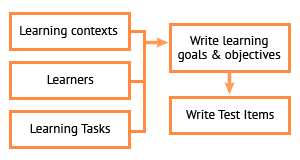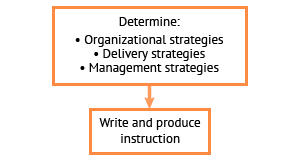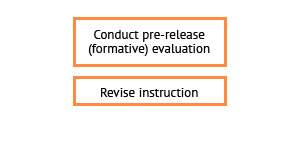Learning Design
Androcom employs experienced instructional designers to develop learning in all its forms. Our job: to create effective, engaging learning materials that meet explicit learning objectives. To achieve that result, Androcom employs the systematic instructional design process depicted below. The advantages of this approach include:
- Constant reference to learner needs;
- Assurance that the instruction produced will focus on well-defined learning objectives;
- Effective coordination among all contributors to the development process;
- A validation process that pre-tests the effectiveness of the instruction; and
- A delivery tracking and summative evaluation process that ensures continuous improvement.
Analysis

Step 1: Learn as much as possible about the learning environment, learner needs and learning tasks in order to write a comprehensive set of learning goals and objectives. Test questions are prepared for each learning objectives to guide the preparation of instructional materials (i.e. teach to the questions).
Strategy

Step 2: Organize the subject matter by major topic and sub-topic, establish the sequence of instruction, identify the type of learning to be imparted (e.g. Working information? Intellectual skill? Cognitive strategy? Practical skill? Attitude change?), decide on appropriate learning activities and media of delivery, and determine how the learning activity will be managed and supported. Capture this in Instructional Design Plan.
Production

Step 3: Write the instructional materials, arrange for production, and work with the production team (e.g. graphic artist, animator, videographer, programmer, Web Master, etc.,) to ensure that all training assets meet expectations.
Validation

Step 4: Work with stakeholders, including representative learners, to evaluate a working prototype of the program. Is the content accurate and well organized? Does the delivery platform work properly? Are the objectives of instruction being achieved? Any identified weaknesses are corrected before the program “goes live”.
Delivery

Step 5: Implement the program and invite learners to make use of it. Track user progress and results – and invite comments and suggestions for improvements. If shortcomings that require immediate attention are identified, take prompt action.
Evaluation

Step 6: At the conclusion of an instructional cycle, conduct a summative evaluation to collect and analyze data for use by decision makers in judging the program’s effectiveness and efficiency. This may lead to changes in the program’s contents, organization, delivery methods, or other characteristics to improve performance.
